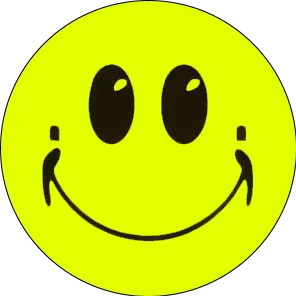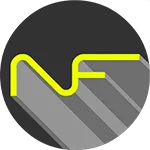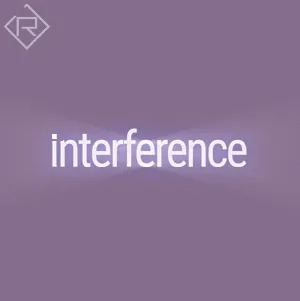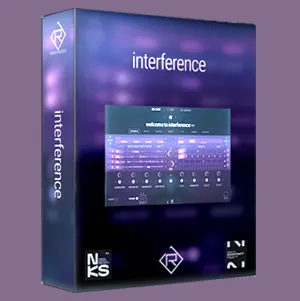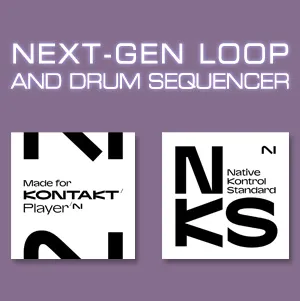3. March 2023 | Inspiration | Noizefield
303 Day – The Roland TB-303: History, Hardware Clones, and Software Alternatives

The Roland TB-303 is a legendary electronic music instrument that has played a significant role in the development of genres such as acid house, techno, and electro. Despite its relatively short production run from 1982 to 1984, the TB-303’s unique sound and character have made it an enduring favorite among musicians and producers. In this article, we’ll take a closer look at the history of the TB-303 and its impact on music, as well as explore some of the popular hardware clones and software alternatives available today.
History of the Roland TB-303
The Roland TB-303 was originally designed as a bass accompaniment instrument for guitarists, but it was soon adopted by electronic musicians who discovered its unique sound and flexibility. The TB-303’s distinctive “squelchy” and resonant sound is due in part to its analog circuitry, which produces subtle variations and imperfections in the sound. The TB-303 also features a step sequencer that allows users to program patterns and sequences in real-time, which was a novel feature at the time.
Despite its innovative design, the TB-303 was not a commercial success during its initial production run. It was discontinued in 1984, but its influence on electronic music was far from over. In the years that followed, the TB-303 became increasingly sought after by musicians and producers looking to capture its unique sound and character. The TB-303’s distinctive sound can be heard on countless classic tracks from the 1980s and beyond, and its influence continues to be felt in electronic music today.
Why does everybody love the TB-303 or why is it so famous?
The unique sound of the TB-303 is due to its distinct filter, which creates a distinctive resonance that can be manipulated in real-time with the machine’s controls. When combined with the synth’s envelope generator and modulation options, it creates a sound that is both squelchy and expressive. The TB-303’s sequencer is a 16-step programmable sequencer that allows for the creation of complex rhythmic patterns. This sequencer was designed to be used in conjunction with the TB-303’s unique sound generation capabilities, and the two were intended to work together to create the classic acid house sound.
The TB-303’s circuitry also plays a role in its sound. The synth’s sound generation is based on an analog oscillator and filter circuit, which gives it a warm and organic sound that is difficult to replicate with digital synthesis techniques. The circuitry also introduces some subtle harmonic distortion that adds to the synth’s character and contributes to its iconic sound.
While software synthesizers can replicate many of the sounds of the TB-303, they often lack the subtle variations and imperfections that come from working with analog circuitry. This is one reason why many musicians and producers continue to use the original TB-303 hardware or seek out faithful hardware clones, even in the age of digital music production.
That being said, modern software synthesizers can still create incredibly rich and complex sounds that can rival or even surpass the capabilities of the TB-303. It’s all a matter of personal preference and the specific needs of your music.
Hardware Clones of the Roland TB-303
In the decades since the TB-303’s initial production run, a number of hardware clones and replicas have been developed by various manufacturers. These clones seek to recreate the sound and functionality of the original TB-303, often with additional features and improvements. Some popular TB-303 clones include the Acidlab Bassline 3, the Cyclone Analogic TT-303 and the Behringer TD-3.
In addition to hardware clones, there are numerous software alternatives to the TB-303 that seek to recreate its unique sound and functionality. Some popular software alternatives include:
Paid Software Alternatives to the Roland TB-303
Audiorealism Bass Line – This plugin is designed to accurately emulate the sound and character of the TB-303, with added features such as an arpeggiator and effects.
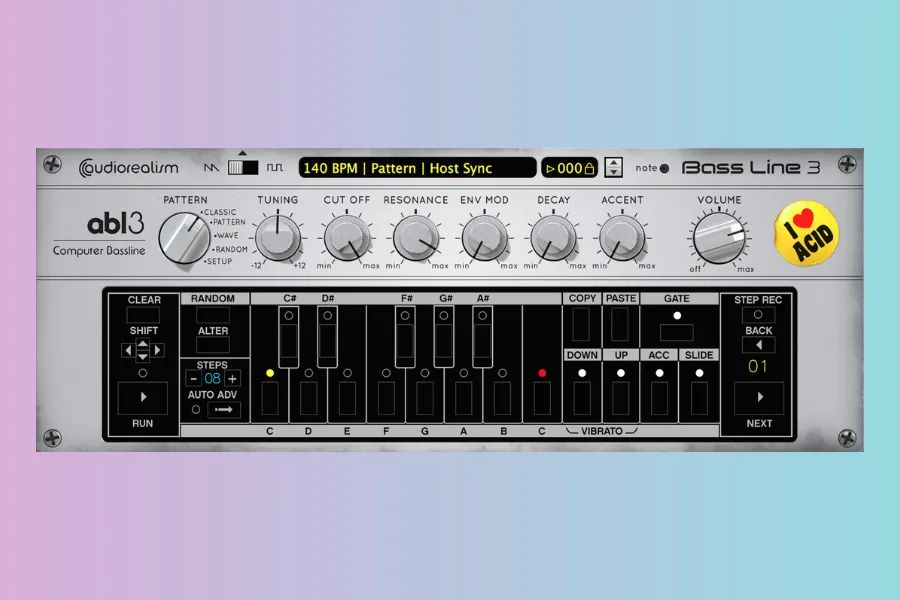
D16 Group Phoscyon 2 – This software instrument offers a faithful emulation of the TB-303, with additional features such as distortion, filter modulation, and more.
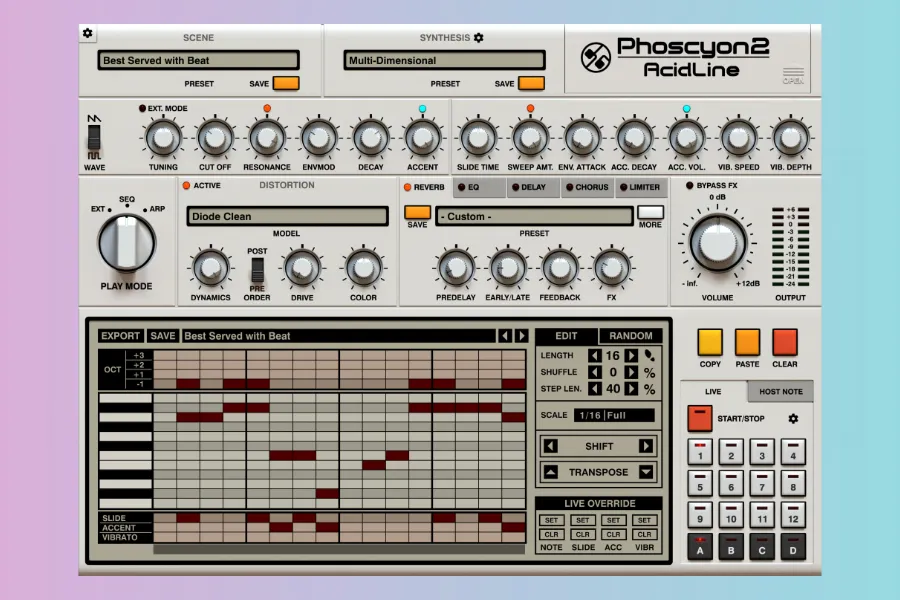
Free Software Alternatives to the Roland TB-303
RONANFED RF-AB303A single oscillator monophonic synth with filters and various effects like Parametric EQ, Distortion, Compression, Delay and Reverb that provides a simulation of the Roland TB-303.
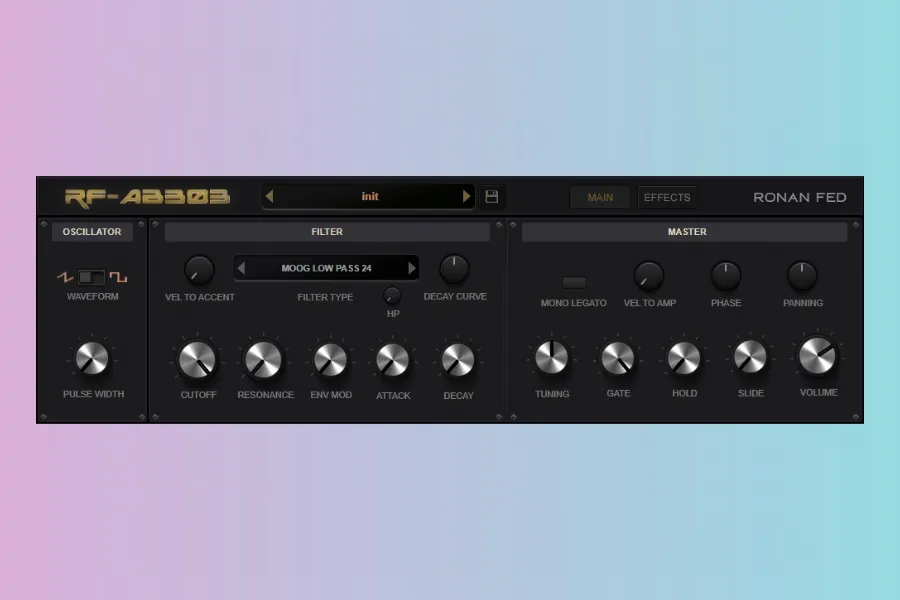
TAL-BassLine-101 – This plugin is not really a recreation of the TB-303 and reminds more on a SH 101, but is capable of TB-303 alike sounds.
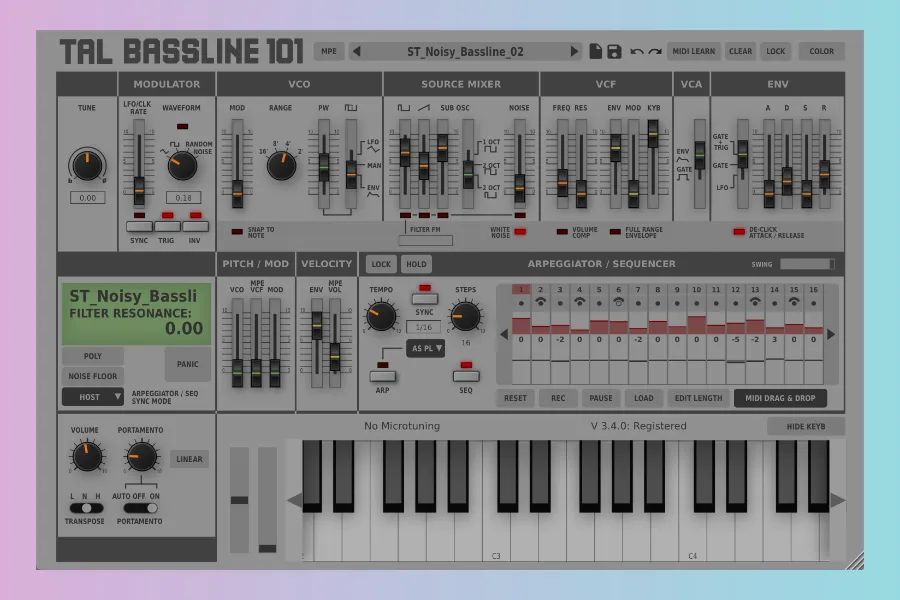
Audio Damage Phosphor 2 – This plugin offers a unique hybrid of digital and analog synthesis, with a range of filtering and modulation options that can be used to create TB-303-style sounds.
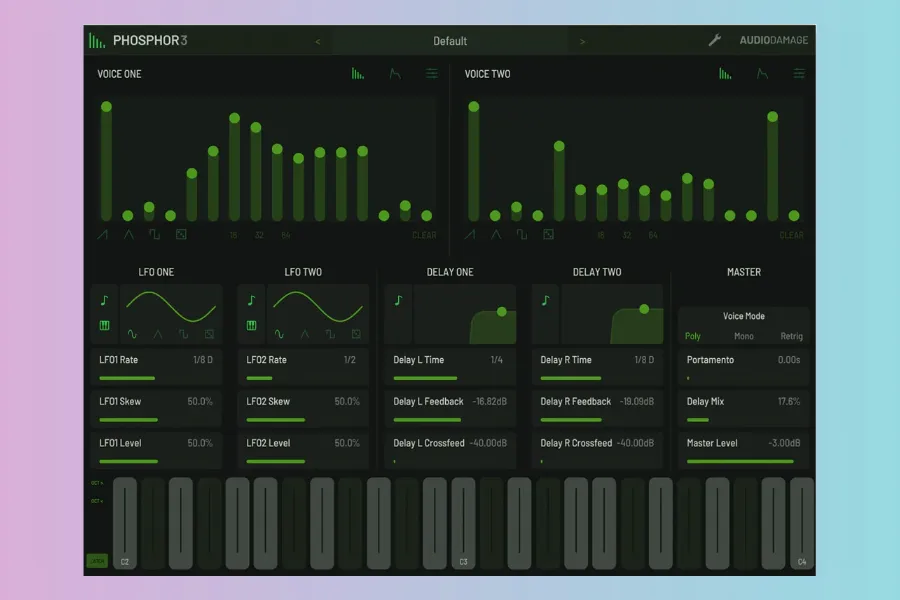
Venom VB-303 – This plugin is a win32 VST made with SynthEdit/SE_SDK2. It’s an approximation of the sound of a x0xb0x, and the sequencer of the TB-303.
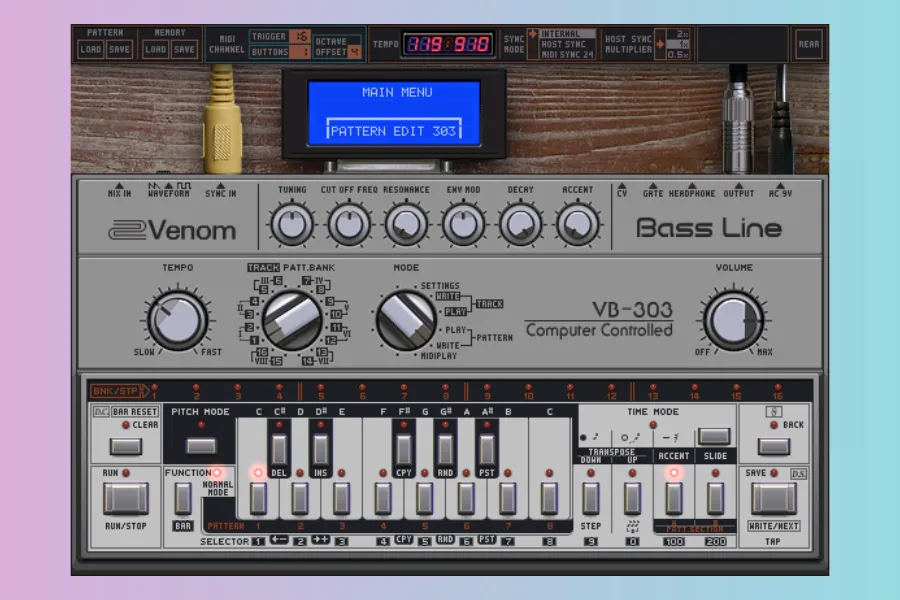
If you want to recreate the TB-303 sound using a modern software synthesizer, there are a few things to keep in mind. First, you’ll want to choose a synth that allows you to create a similar filter resonance effect. There are many options out there, but a few good choices include Native Instruments’ Massive X, U-He’s Diva, or Xfer Records’ Serum.
Once you’ve chosen your synthesizer, you’ll want to start by creating a basic pattern using a simple waveform like a sawtooth or square wave. Then, add some filter resonance and use the synth’s envelope generator to create a plucky attack sound.
To get the groove right, try setting the sequencer to a 16th-note grid and accenting certain notes to create a more interesting rhythm. The TB-303’s accent feature is a big part of its signature sound, so make sure to experiment with adding accents to different notes in your pattern.
Another key element of the TB-303 sound is the use of slides, which create a smooth gliding effect between notes. Most software synths have a glide or portamento feature that you can use to create this effect.
With a little experimentation and some careful attention to detail, you can recreate the iconic sound of the Roland TB-303 using a modern software synthesizer. Whether you’re creating classic acid house tracks or experimenting with more contemporary electronic styles, the TB-303 sound is sure to add a unique and expressive element to your music.
HAPPY 303 DAY
